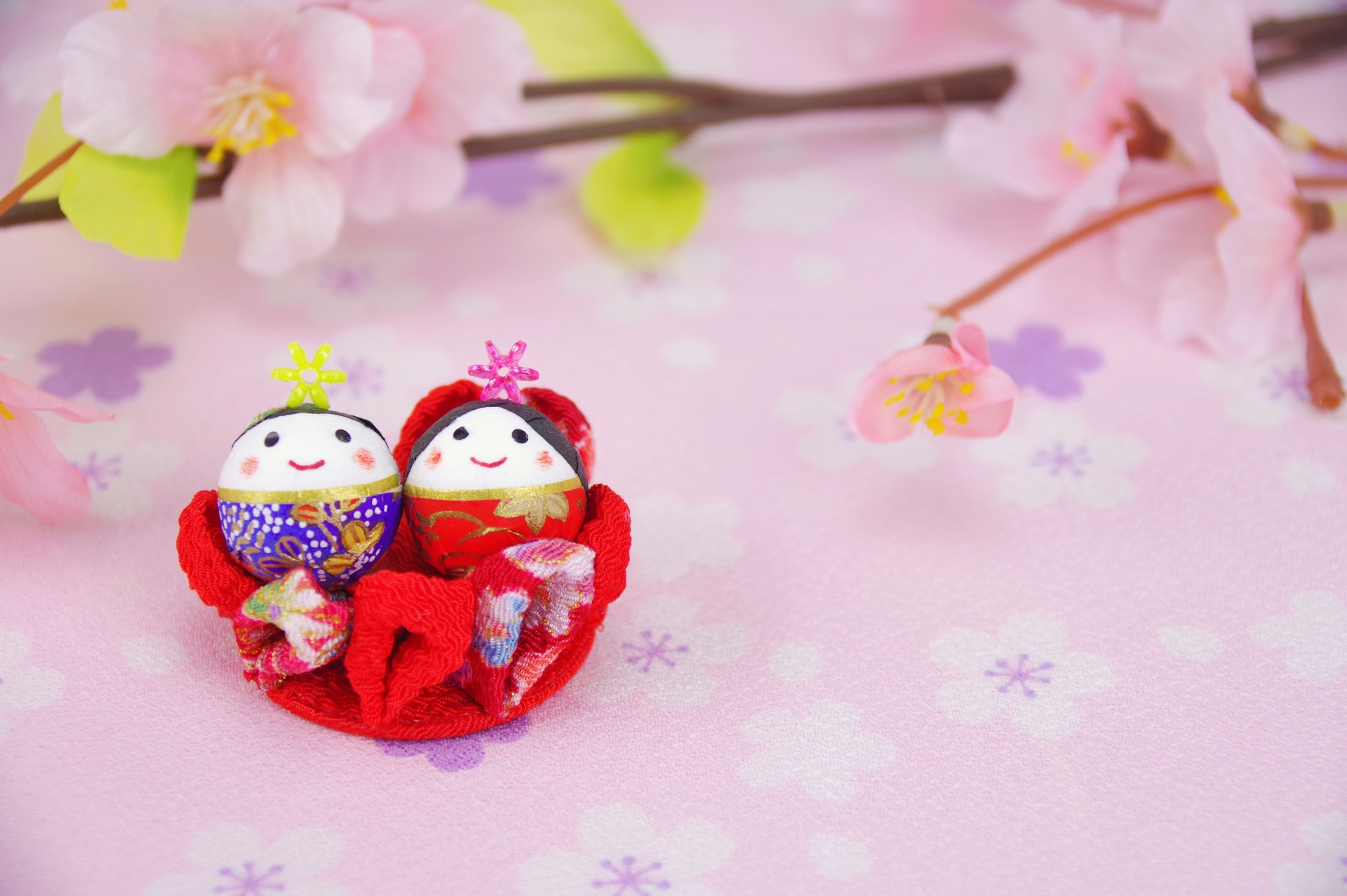3月3日は桃の節句、ひな祭り。女の子の成長と幸せを願う日です。
この日、雛人形を飾ったり、ちらし寿司を食べる家庭も多いかと思います。
ひな祭りは欧米にはない行事ですが、英語で簡単に説明してみましょう!
英語の記事:

「ひな祭り」は英語で何と言う?
「ひな祭り」は「Girl’s Day」や「Doll Festival」と訳される場合もあります。
海外では、なかなか馴染みのない行事なので、どういうものか説明してみましょう。
Hinamatsuri is an annual event in Japan that takes place on March 3rd.
The festival is held to pray for the healthy growth, prosperity and happiness of girls, especially those that are 10 or younger.
ひな祭りは毎年3月3日に行われる行事です。
ひな祭りは特に10歳以下の女の子の健やかな成長と幸せを祈るために行われます。

「ひな人形」は英語で何と言う?
「雛人形」は「Hina dolls」と訳します。
ただ、これだけでは通じないので、どういう人形なのか、なぜひな祭りの日に飾るのか、説明しましょう。
Families with young girls will display a set of beautiful traditional Japanese dolls called hina-ningyo (hina dolls) at home.
幼い女の子がいる家庭は、雛人形と呼ばれる伝統的な美しい人形を家に飾ります。
The hina dolls are believed to ward off evil and misery, and are displayed as a prayer for good health and happy marriage for girls in the future, as they represent the Japanese imperial family’s wedding. The emperor and the empress dressed in traditional clothes from the Heian Period (794-1185) are generally displayed at the top of the platform called hina-dan.
雛人形は厄を祓ってくれると信じられています。雛人形は、日本の天皇と皇后の結婚式を表しているため、女の子の健康と幸せな結婚への祈りを込めて飾られます。
天皇と皇后は平安時代の装束を着て、ひな壇に飾られています。
「ちらし寿司」「はまぐり」は英語で何と言う?
ひな祭りに食べる料理と言えば、はまぐりのお吸い物やちらし寿司、三色の菱餅が思い浮かびます。
なかなか欧米では食べられないものですが、以下のように英語で説明できます。
Chirashizushi is the most popular food to eat on Girl’s Day, and can be translated as “scattered sushi” in English. It is a traditional Japanese dish consisting of vinegared rice with a variety of ingredients, including vegetables, thin egg omelets and seafood that are all scattered on top.
「ちらし寿司」はひな祭りに食べる最も人気の食べ物で、「scattered sushi」と英語に訳せます。
ちらし寿司は酢飯に野菜や薄焼き卵、海鮮など様々な具材をちらした、日本の伝統的な食事です。
「はまぐり」は「hamaguri clam」、「はまぐりのお吸い物」は「hamaguri clam clear soup」と訳せます。
次は、三色の「菱餅」を説明してみましょう。
Hishi-mochi consists of pink, green and white layers of mochi.
Pink represents warding off evil spirits, green represents health and white represents purity.
菱餅はピンク、緑、白の餅が重なって出来ます。
ピンクは厄除け、緑は健康、白は清浄を表します。

ひな祭りの歴史を英語で説明
There are a few theories about the origin of hinamatsuri, but most likely it started in ancient China around the 3rd century. It was later introduced to Japan and eventually became a part of tradition as Momo no sekku, one of the five seasonal celebrations, in the Nara Period which is over 1,000 years ago.
ひな祭りの起源については諸説ありますが、3世紀の中国で始まったと言われています。
後に日本に伝えられ、1,000年以上前の奈良時代に5つの節句のうちの1つ、桃の節句という伝統行事になりました。
In those days, the mortality rate of little children was significantly higher than that of today due to infectious diseases and the lack of an adequate medical system. People started to create small paper dolls and flow them down the river, hoping that they would get rid of bad luck from their children as a substitute. It was in the Edo Period (1603-1868) that the current custom of displaying hina dolls at home finally became popular among Japanese citizens.
この頃、感染症や満足な医療が整っていなかったため、小さな子どもの死亡率が今日に比べてかなり高いものでした。人々は子どもの身代わりになって悪運を除いてくれるよう願いを込め、小さな紙の人形をつくり、川に流しました。
現在のように雛人形を家に飾ることが日本中で広がったのは、江戸時代のことでした。

英語で説明しようシリーズ
日本の文化を英語で説明するシリーズを他にも更新しています。
外国人に日本のことを英語で説明する際、お役に立てば幸いです。









コメント